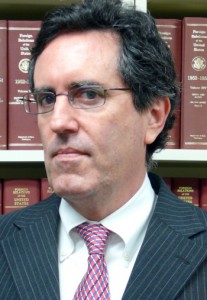
THE MEANING OF TRANSPARENCY, AND MORE FROM CRS
President Obama's declared goal of making his “the most transparent Administration in history” generated successive waves of enthusiasm, perplexity, frustration, and mockery as public expectations of increased openness and accountability were lifted sky high and then — often, not always — thwarted.
Every Administration including this one presides over the release of more government information than did its predecessors, if only because more information is created with the passage of time and there is more that can be released. But President Obama seemed to promise more than this. What was it?
Part of the problem is definitional.
“Although there are laws that affect access to government information, there is no single definition for what constitutes transparency– nor is there an agreed upon way to measure it,” observes a new report from the Congressional Research Service.
“Transparency may be defined as the disclosure of government information and its use by the public,” the report suggests. “Transparency, under this definition, requires a public that can access, understand, and use the information it receives from the federal government. This report first assesses the meaning of transparency and discusses its scholarly and practical definitions. It also provides an analysis of the concept of transparency, with a focus on federal government transparency in the executive branch.”
“This report subsequently examines the statutes, initiatives, requirements, and other actions that make information more available to the public or protect it from public release. It also examines transparency and secrecy from the standpoint of how the public accesses government information, and whether the release of government data and information may make operation of the federal government more or, counter-intuitively, less transparent. Finally, this report analyzes whether existing transparency initiatives are effective in reaching their stated goals.”
The CRS report makes only passing mention of national security secrecy and does not address efforts to reduce the scope and application of secrecy in the national security realm. It also does not consider in any depth how technological changes are affecting government information policy, perturbing or mooting longstanding official positions on disclosure and non-disclosure. Nor does it explore political obstacles to greater transparency (such as the congressional policy that bars CRS publication of this very report on transparency).
A copy of the report was obtained by Secrecy News. See Government Transparency and Secrecy: An Examination of Its Meaning and Use in the Executive Branch,” November 8, 2012.



